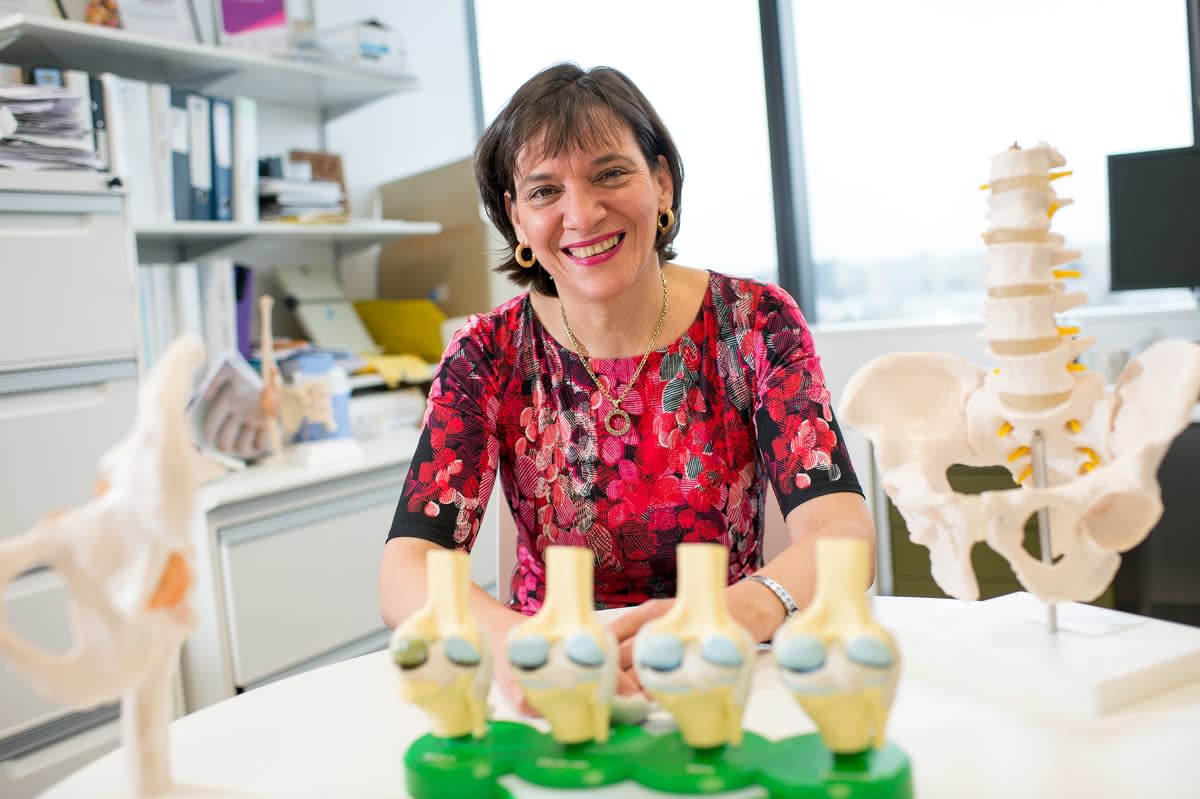The best gift you can give your future self is to prevent weight gain from happening, rather than trying to lose weight later.
Throughout my career in musculoskeletal research, I’ve repeatedly come across the interconnectivity between joint health and heart health. We’re missing valuable opportunities to protect both into old age.
Osteoarthritis (OA) is the most common form of arthritis, occurring when protective cartilage that cushions joints wears down. Commonly affected joints are the knees, hands, hips and spine.
An eye-watering $2 billion is spent in Australia each year on joint replacement for OA. It’s a huge and expensive undertaking, but it’s one we can significantly reduce.
Traditionally, OA is diagnosed using x-rays. This works well for diagnosis, but doesn’t provide important ancillary information about the condition of the joint and the surrounding tissue.
Unfortunately, you need to lose at least 10% of your cartilage before it’s even visible on x-ray, which is a staggering amount of deterioration and functional loss.
Several years ago, our team showed that magnetic resonance imaging (MRI) can be used to assess the structures within and around joints. This enabled new research that significantly improved our understanding of the different biological mechanisms that lead to OA, and our understanding of the relationship between obesity, joint health, and a range of chronic diseases.
This new knowledge has opened the doorway for testing new therapies in clinical trials.
Fatty tissue causes complex changes
Obesity-related OA symptoms were traditionally thought to be triggered by simple load-bearing on joints. But there were obvious gaps in this theory – obesity is a risk factor for hand OA, and hands aren’t subjected to the loads that knees and hips bear through standing and walking.
The detailed examination of joints using MRI has helped us understand there are complex metabolic and inflammatory changes to affected joints that are brought about by excess fatty tissue.
Carrying five kilograms of additional fat isn’t like lugging around a 5kg sack of potatoes – fat isn’t inert; it produces inflammatory chemicals that affect joints and surrounding tissues.
Obesity has a double-whammy effect; it inflames joints, and adds excess loading.
We’ve also found that having early-stage vascular disease results in more joint damage, most likely through reducing blood supply and nutrition to joints.
This prompted us to run several trials, one of which we’ve just completed, that showed that cholesterol-busting statins may slow knee joint damage by reducing bone marrow lesions. We have another trial ongoing that’s looking at the common diabetes drug, metformin.
The good news is, those findings about the role of fatty tissue and vascular change have opened new approaches to the treatment and prevention of OA that will improve outcomes for patients and reduce healthcare costs to the community.

Preventing weight gain versus weight reduction
Across my years of work, nothing has jumped out at me more than the importance of preventing weight gain versus weight reduction, and the interconnectedness of joint health and heart health.
All of the guidelines around OA focus on weight loss. While there’s no doubt that obesity is the major reversible risk factor for OA, it’s very clear that weight loss is extremely difficult for most people.
Studies have shown that weight loss is associated with only very small reductions in OA joint pain. One in three women report knee pain, putting them on the pathway to increasing pain and OA.
Of course, the other way to tackle obesity is to prevent the slow accumulation of weight across the adult years. Most adults gain about 0.5 kilograms per year. It’s been estimated that preventing this weight gain could be achieved by reducing the average daily energy balance by just 30 joules per day – that’s equivalent to one apple or 2 squares of chocolate per fortnight.
Successful low-intensity approach
We’ve found that preventing weight gain using a very simple, low-intensity approach achieved a 50% reduction in reports of increasing knee pain among women in the community who experienced low-level knee pain.
By continuing on the current pathway, we potentially set up patients for failure. We need to do better, and we need to understand that OA and many other chronic conditions aren’t an inevitable fact of ageing.
There’s a strong relationship between OA and cardiovascular disease. Vascular disease is associated with joint damage, so slowing that will also improve joint health.
Conversely, those with OA are twice as likely to die from cardiovascular disease, because they have high levels of cardiac risk factors, such as high blood pressure and high cholesterol.
Joint pain is a common driver for seeking healthcare, by attending a chemist, or a GP, or an allied health professional such as a physiotherapist.
Joint pain’s role as a warning sign for other health issues makes this a hugely teachable moment, one that we need to seize for education about weight management, physical activity and cardiac risk assessment.
After all, healthy joints make for healthy hearts.
For more information and videos, go here.






